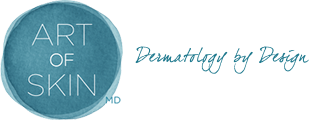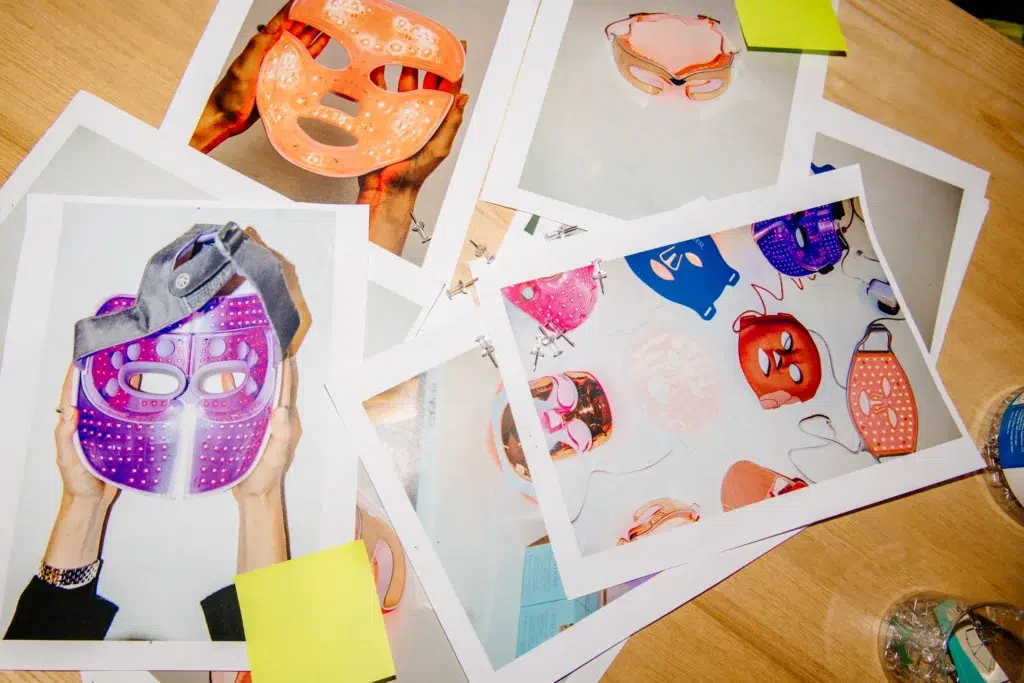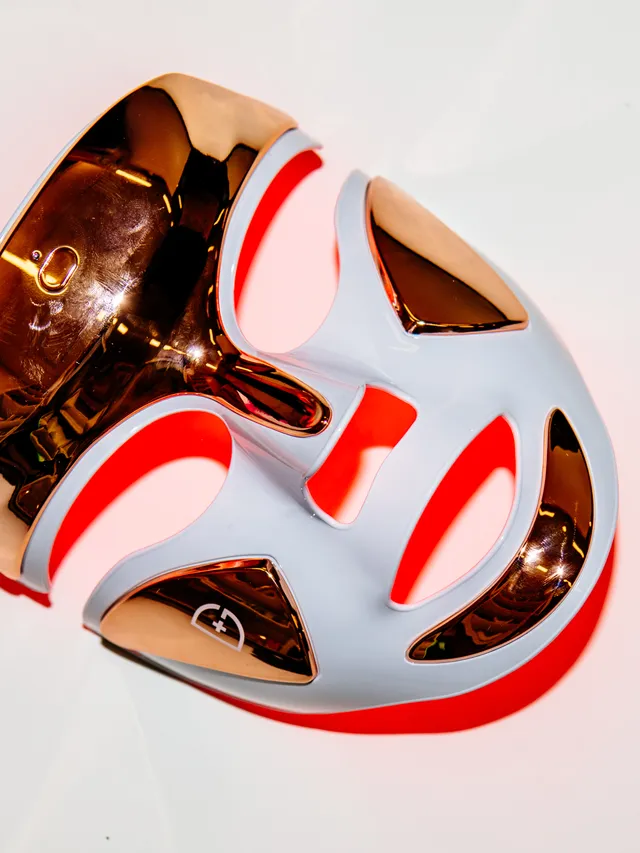As a dermatologist, I’m often asked about the best at-home tools that can support skin health and enhance the results of in-office treatments. One of my favorite non-invasive options? Red light therapy masks. With consistent use, these devices can improve everything from acne and pigmentation to fine lines and skin texture—all from the comfort of your home.
Red light therapy has emerged as a go-to treatment for skin rejuvenation, acne, inflammation, and overall skin health. LED face masks now bring this once in-office technology into the comfort of your home, offering wavelengths that stimulate collagen, reduce redness, and promote healing.
Over the years, I’ve tested a wide variety of LED masks and wands myself and recommended them to patients looking to boost collagen production, soothe inflammation, or manage breakouts.
LED stands for light-emitting diode—a light source that penetrates the skin at different depths depending on the wavelength.
LED Light Therapy Benefits:
Wrinkle reduction, acne improvement, decreased inflammation, improved circulation, and faster healing after procedures.
How LED Light Therapy Works:
Treatment works through different wavelengths of LED light to penetrate the skin at different depths to effectively combat acne, inflammation, swelling, signs of aging, collagen production, rosacea, and even minor wounds. Keep in mind that these work best to supplement a well-rounded routine of in-office treatments, a thorough skin-care routine, and consistent use.
Each color targets specific skin concerns. Someone with acne-prone skin might consider adding bacteria-killing blue-light therapy into their blemish-fighting skin-care routine, which would already include steps like cleansing, toning, and using topical acne-fighting serums formulated with retinol or AHAs/BHAs.
•Red light (620–750nm): My go-to for anti-aging. It stimulates collagen production, reduces inflammation, promotes healing, and improves circulation.
•Near-infrared (760–1400nm): Similar to red light but penetrates deeper, making it especially effective for wrinkles and skin laxity.
•Blue light (450–495nm): Excellent for acne-prone skin. It has antibacterial properties that help kill acne-causing bacteria and reduce inflammation.
•Green light: Helpful for hyperpigmentation, sun spots, and minor scarring.
Usage:
Works best as part of a comprehensive skin regimen that includes professional treatments, proper home care, and consistent use. Most dermatologists recommend 3–5 sessions per week, 10–20 minutes each, for at least 4–8 weeks to see visible results. Keep your skincare simple during this time—skip harsh exfoliants and opt for soothing, hydrating products to protect the skin barrier.
Device selection:
Acne-prone individuals would benefit from blue light; those more concerned with anti-aging or psoriasis would benefit from red-light therapy; and those with hyperpigmentation or minor scarring would benefit from green light. One should ideally use the mask three to four times per week for best results. She instructs us to avoid harsh or over-exfoliating products while using LED; rather, reach for gentle, moisturizing salves.
I love incorporating LED therapy into my patients’ treatment plans because the results are cumulative—the more consistently you use it, the better your skin will look and feel.
LED therapy is wonderfully multi-tasking—it can help with acne, inflammation, swelling, fine lines, collagen stimulation, rosacea, and even minor wounds. I most often recommend it as a supplement to a comprehensive skin plan that includes in-office procedures and a well-rounded home care regimen.
LED masks now make it possible to enjoy the benefits of this treatment from the comfort of your home. With the right device, you can stimulate collagen, calm redness, fight acne-causing bacteria, and even accelerate healing between in-office procedures.
Safety:
FDA-cleared devices are recommended. LED therapy is generally safe with minimal side effects when used as directed. “While the advanced LED lights might feel intimidating, light therapy is considered safe with very little risk of side effects or overdoing the treatment; just opt for an FDA-cleared device, follow the instructions, and watch for any signs of irritation. While the technology might look futuristic, LED light therapy is considered very safe when you use an FDA-cleared device as directed. Follow the manufacturer’s instructions closely and monitor for any signs of irritation.
My personal pick:
Dr. Dennis Gross DRx SpectraLite FaceWare Pro
Best for Acne and Anti-Aging in One
This is the LED mask I recommend most often for those dealing with both breakouts and premature aging. The FaceWare Pro combines red and blue light therapy—red for collagen stimulation and inflammation, and blue to fight acne-causing bacteria. It’s FDA-cleared and structured to sit flush against the skin, which helps maximize efficacy.
I’ve seen impressive clinical and patient-reported results with this one: improved tone, fewer blemishes, and more even texture after just a few weeks. It has three light settings and takes only 3 minutes per treatment, making it easy to stay consistent.
LED Light Mask FAQs
How do LED light masks actually work?
Red light therapy uses specific wavelengths—usually between 600–850nm—that penetrate the skin and stimulate fibroblasts to increase collagen, reduce inflammation, and speed up cellular repair. Blue light targets bacteria like P. acnes that contribute to breakouts.
Are LED masks really worth it?
When used consistently, absolutely. These devices can be a game-changer for patients dealing with inflammation, acne, dullness, or early signs of aging. They’re not a replacement for professional procedures, but they’re an excellent way to support and maintain skin health between visits.
Do dermatologists actually recommend them?
Yes—we do! I personally recommend red light therapy to my patients all the time. However, I always caution that quality matters. Look for FDA-cleared devices that use clinical-grade wavelengths. Some masks are just gimmicky gadgets, while others truly deliver results.
Who should avoid LED masks?
LED masks are safe for most skin types, but I advise caution if you have a history of seizures, light sensitivity, or are on photosensitizing medications. Always check with your dermatologist before starting any new device.
How long until I see results?
Some patients notice a brighter glow after just a week or two. For more noticeable improvements in fine lines, tone, and acne, give it 4–6 weeks of regular use. Consistency is key.
Can I use LED masks after Botox or fillers?
Yes—and I often recommend it! Red light can help minimize swelling and bruising post-procedure and support overall skin healing. Just wait about 24–48 hours after injections before using your device.



